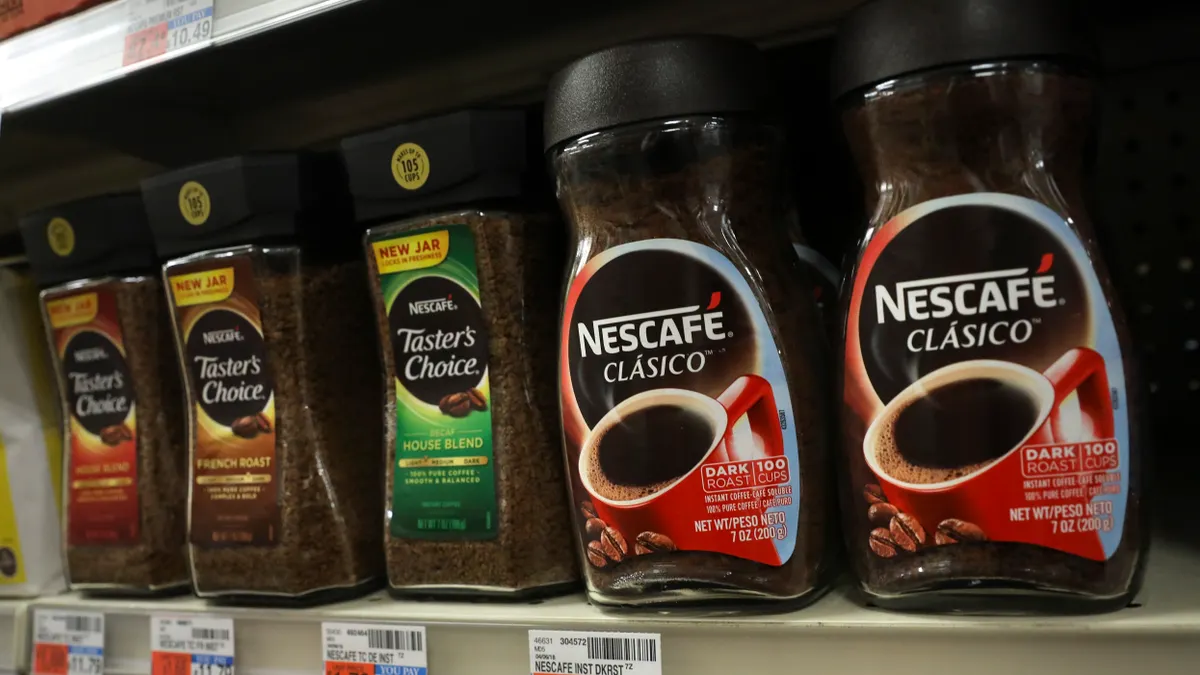Women have long been underrepresented in the supply chain field, but they are finally starting to catch up.
Spurred by corporate initiatives to increase the number of employees beyond just straight, cis, White men (and by tying executive compensation to those efforts), women in the field are closer to getting parity in the number of jobs and salary.
"It’s still a male-dominated industry. I can’t tell you how many times when I’ve been in meetings and I’m the only woman," said Wendy Tate, professor of supply chain management at the University of Tennessee, who also works with Nexxus Initiative — a campus group that empowers women in supply chain. "I think companies are making really good strides in looking around and saying 'oh we made a mistake.'"
Of course, women still aren’t at equal parity in terms of leadership and salary across the board, and women of color are still woefully underrepresented, but change is happening — in the right direction.
The wage gap is closing
Supply chain continues to be a lucrative, in-demand career, and women’s salaries are finally catching up.
Overall, the Association for Supply Chain Management's Supply Chain Salary and Career Report found that the median salary for supply chain professionals is $86,000 a year. And despite the economic challenges of 2020, 87% of those surveyed also received a cash bonus.
Within those numbers, they found that the pay gap between men and women under 40 has finally closed.
Pay gap closes for women under 40
"That is an extraordinary step forward in terms of recruiting individuals and recognizing that we need greater diversity, especially within the supply chain field as male dominated as it has been," said Abe Eshkenazi, CEO of the Association for Supply Chain Management.
The gap isn’t erased though. "The longer women stay in the industry, the greater the pay disparity goes the other way," he added. However, the closed wage gap in the under-40 group will most likely translate up. When men and women are on more equal footing early in their careers, they're more likely to stay that way as they progress.
Commitments to diversity pay off
Recruitment efforts to bring more women into supply chain have been working, too. Women make up 41% of the supply chain workforce, according to the 2021 Women in Supply Chain Survey by Gartner and Awesome. It marks the highest percentage since the survey started in 2016.
This, in part, is because more companies are making commitments to diversity, equity and inclusion, said Dana Stiffler, vice president and analyst at Gartner Supply Chain Practice.
A previous survey by Gartner and ASCM found 68% of responding supply chain organizations had a DEI goal related to attracting, developing, retaining and advancing women in 2021. In the 2020 survey, only 46% of respondents had that goal.
"I think companies are making really good strides in looking around and saying 'oh we made a mistake.'"

Wendy Tate
Professor of supply chain management at University of Tennessee
"For their investors as well as their employees, [companies] put a stake in the ground," said Stiffler by publicly stating their goals, and creating financial incentives for meeting them. Starbucks, Nike and Chipolte, for example, have all linked executive compensation to meeting DEI targets.
"If you’re going to make that 10% to 15% of executive compensation and they don’t make those goals, that’s a nice chunk of change," she said.
Of course, supply chain organizations still have a long way to go. Women of color make up 14% of supply chain organizations, with steeper than average drop-offs as careers advance. Overall, 54% of respondents had trouble retaining mid-career women, and about two thirds of respondents showed concern about the middle of their pipelines. The top two reasons cited were lack of career and development opportunities.
"They go to competitors. Sometimes they redirect into professionals services" like independent consulting, Stiffler said. "But usually they’re leaving because they get a big promotion and pay raise somewhere else."
Women stayed in supply chain during the pandemic
Nearly 2.2 million women left the workforce between February and October 2020 during the COVID-19 pandemic, according to the National Women’s Law Center.
However, that wasn’t the case in supply chain. About the same number of women had supply chain jobs in 2020 than 2019, according to the survey by Gartner and Awesome. The only dip was at the executive level — 15% versus 17% in 2019. Stiffler said they attribute the dip to the softness of the 2020 pipeline at the VP level, not the pandemic.
She added there are a number of reasons a number of women remained in supply chain during the pandemic. Some women in supply chain are from the Gen X and Boomer generations, and therefore most likely don’t have young children at home who need adult supervision for virtual schooling. But also, supply chain proved to be "mission critical," and women in those jobs were less likely to be laid off for pandemic-related reasons.
"Things have completely just gone to hell in a handbasket so why don’t we just give the job to women?"

Dana Stiffler
Vice President and analyst at Gartner
Stiffler also cites the concept of the "glass cliff," where women and members of other underrepresented groups are tapped for leadership roles in times of crisis. White women, and men and women of color are more likely to be promoted to CEO when firms perform weakly, according to a Utah State University study that looked at Fortune 500 companies over a 15 year period. Women have also proven to be better in a crisis, according to the Harvard Business Review.
"Things have completely just gone to hell in a handbasket so why don’t we just give the job to women?" she said.
Publicly stated DEI goals play a role too: If a company wants to maintain those goals, keeping women on the job helps. It will also help to keep pressing women forward in supply chain in general, and leadership roles in the future.
This story was first published in our weekly newsletter, Supply Chain Dive: Operations. Sign up here.






















